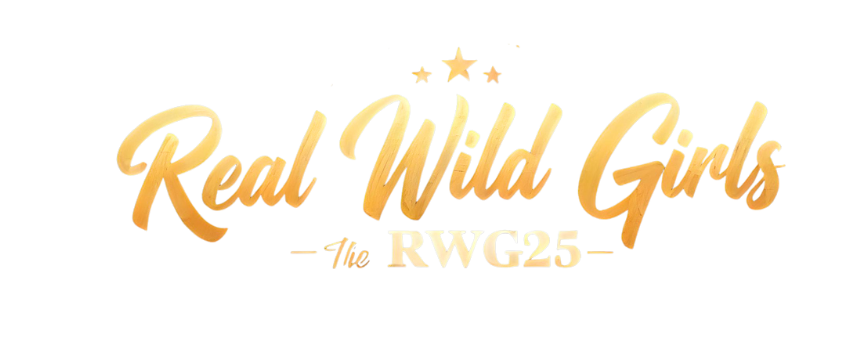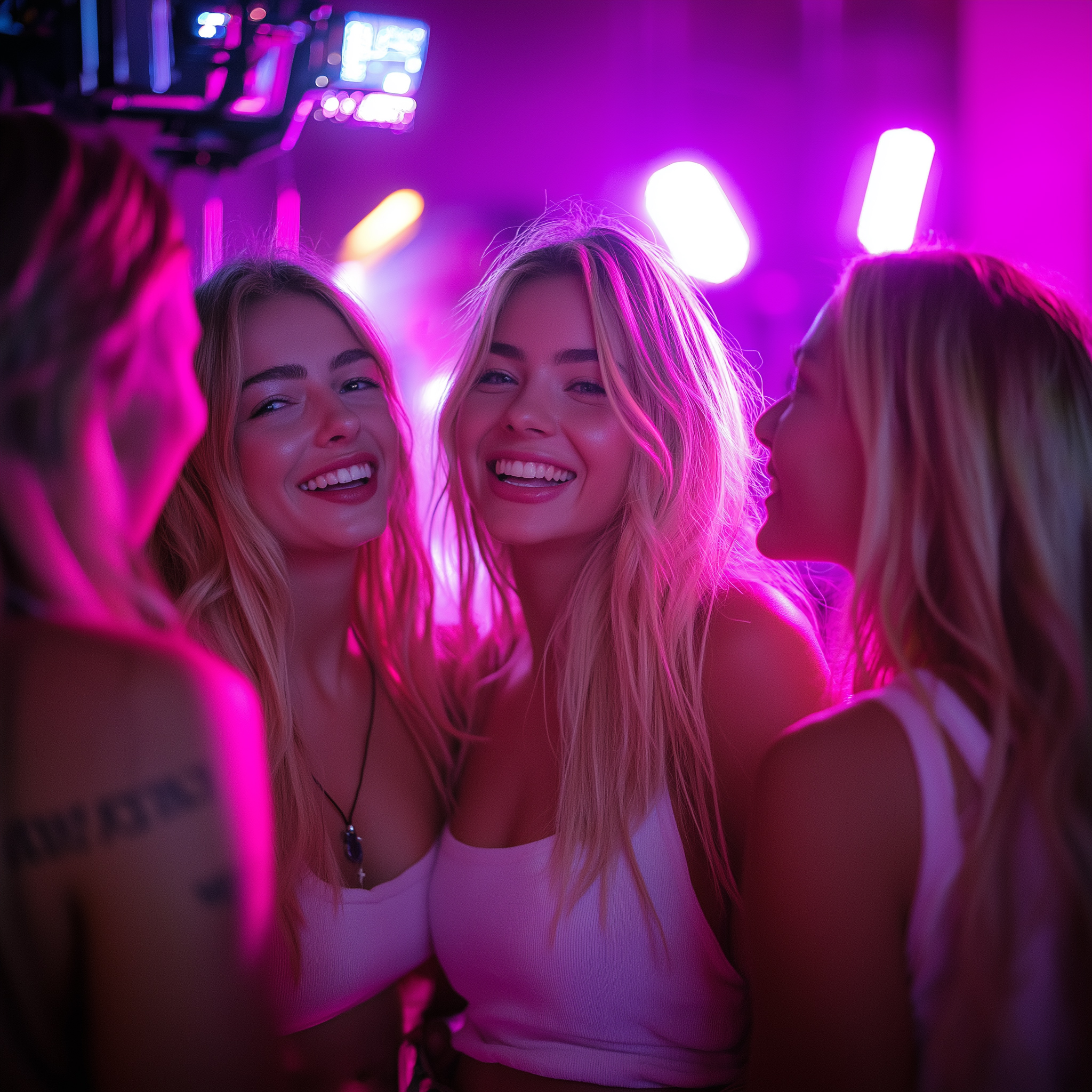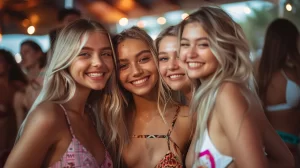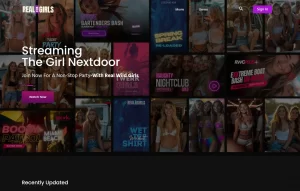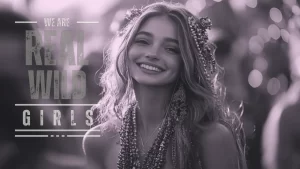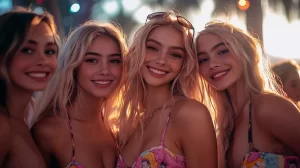
Introduction to the Girls Gone Wild Phenomenon
Girls Gone Wild stormed into the spotlight in the late 90s, becoming a cultural phenomenon almost overnight. At its core, it’s about capturing young women, often in party settings, throwing caution to the wind and engaging in wild, sometimes risqué behaviors. This series of videos and DVDs, created by Joe Francis, banked on the allure of spring break parties, Mardi Gras celebrations, and basically any event where college students and young adults were looking to let loose. It’s built on the idea that when given the chance, people will embrace their wild side, especially in the presence of cameras. The whole thing thrived on the energy of spontaneity and the excitement of the unexpected. It wasn’t just about the revealing moments or the party scenes; it was the essence of unrestrained freedom that drew people in. While the concept might sound simple – film people having the time of their lives – the execution required navigating legalities, securing filming rights, and ensuring a willing participation of those filmed, all while maintaining an electric atmosphere. Girls Gone Wild was more than just a series of videos; it was a snapshot of youth culture at its most uninhibited.
The Planning Stage: Scouting Locations and Talent
At the heart of Girls Gone Wild’s ultimate party adventure lies meticulous planning. This stage is crucial and involves scouting the perfect locations and finding the right talent. Think of it as laying the groundwork to ensure everything runs smoothly later.
First, location scouting. The team looks for places that scream fun and freedom. Beaches, clubs, and exotic locales often top the list. The chosen spot must not only be visually stunning but also vibe with the wild, carefree spirit of the brand. It’s about finding a place where participants feel free to let loose.
Then there’s finding the talent. The show banks on real people, not professional actors, to bring authenticity to the screen. The casting is less about traditional auditions and more about finding individuals who embody the spontaneous, adventurous spirit. It often involves visiting popular hangout spots or using social media to catch the eye of potential stars.
Both steps require a keen eye, patience, and a knack for seeing potential. Not every beautiful beach makes a perfect backdrop, just as not every outgoing person fits the bill. It’s a blend of intuition and strategy, ensuring the final product is as electrifying as intended.
Behind the Lens: The Crew’s Role in Capturing the Action
Capturing the essence of the ultimate party adventure isn’t just about pointing a camera and shooting. It’s a calculated game of timing, skill, and pure dedication. The crew behind the lens plays a pivotal role, often overlooked. These are the unsung heroes who navigate through crowds, work under challenging lighting conditions, and anticipate moments before they happen. They’re equipped with more than just technical skills; they possess an intuitive understanding of the party pulse. From the cameraperson hustling to get the perfect shot without missing a beat, to the audio technicians ensuring every laugh, shout, and beat is captured with clarity, their contribution is critical. Let’s not forget the producers and directors who orchestrate the chaos into a cohesive story, making sure that the adventure viewers see is not just wild, but unforgettable. Each member’s effort is a piece in the puzzle, turning raw, unfiltered moments into the ultimate party adventure that audiences crave. Their work goes beyond mere filming; it’s about creating an experience that transports viewers right into the heart of the action.
Legal Considerations and Consent in Filming
Getting the wild party scenes on camera isn’t just about hitting record. There’s a whole legal side to consider, especially around consent. Before anyone can be filmed, especially in scenarios that might end up on platforms like Girls Gone Wild, they’ve got to agree to it – and that agreement should be crystal clear and on paper. This isn’t just good practice; it’s a must. Consent has to be informed, meaning everyone knows exactly what they’re agreeing to and how the footage will be used. This protects the people in front of the camera and the ones behind it. Without these consent forms, filmmakers could face serious legal troubles, from lawsuits to criminal charges. So, while it might seem like it’s all fun and spontaneity, there’s a serious aspect of making sure everything is above board and correctly documented.
Equipment Essentials for the Ultimate Party Shoot
To nail the ultimate party shoot, you don’t need a truckload of gear. Start with a high-quality, versatile camera that can handle low light scenes because parties rarely happen in bright settings. A DSLR or mirrorless camera fits the bill, giving you crisp images even when the lighting isn’t perfect. Next, a reliable video camera is key for capturing those dynamic party moments as they unfold. Don’t forget a couple of spare batteries and memory cards because running out of power or space in the middle of the action is a party foul. A lightweight, sturdy tripod can help stabilize your shots, but for more mobility, a handheld gimbal is your best friend; it smooths out the footage while you move with the crowd. Lastly, good sound equipment cannot be overlooked. A directional microphone will help you catch the clear sounds of the party without all the background noise. With these essentials, you’re set to capture the ultimate party adventure without missing a beat.
Challenges Faced During Filming Parties
Capturing the ultimate party scenes on Girls Gone Wild wasn’t a walk in the park. Imagine trying to film in the middle of wild, unpredictable parties. First off, lighting is a nightmare. You want to catch everything as it happens, but parties aren’t known for their studio-quality lighting. Then there’s the noise. Ever tried having a conversation at a loud party? Now imagine trying to capture clear audio. It’s almost impossible without the right gear.
Crowds are another beast. You’re navigating through a sea of people, all while trying to keep the camera steady and focused on the action. And let’s not forget about consent. It’s crucial, but getting it in the middle of a party frenzy? That requires clear communication and often, a lot of patience.
Lastly, there’s the unpredictability of it all. Parties can go from zero to a hundred real quick, and things don’t always go as planned. Equipment fails, people get too wild, and sometimes, the footage just doesn’t turn out. These challenges are all in a day’s work on the Girls Gone Wild set, making every successful shot a triumph against the odds.
Post-Production: Editing the Wild into Watchable
Once the wild party footage is in the can, it’s time for the real magic: post-production. This stage is where raw, unfiltered contents get trimmed, pieced together, and polished into something you can actually sit down and watch. The aim is to keep the energy high while making sure everything flows smoothly from one scene to the next. Think of it as turning chaos into a coherent story. Editors comb through hours of footage, selecting the best bits that capture the essence of the adventure. They’re like chefs, taking raw ingredients and whipping up a dish that looks and tastes just right. Music gets added, creating that pulsating vibe that keeps you hooked. Graphics and effects are sprinkled in, enhancing the visual appeal without overshadowing the real action. And let’s not forget the color grading – that’s where the footage gets its vibrant, party-all-night look. It’s a meticulous process, requiring skill, patience, and a keen eye for detail. The goal? To deliver an experience that makes viewers feel like they’re right in the middle of the action, without ever leaving their couch. This stage might not be as wild as the shoot itself, but without it, you’d just have a jumbled mess of sights and sounds. Post-production is what turns the wild into watchable.
Marketing Madness: How Girls Gone Wild Became a Sensation
Girls Gone Wild mastered the art of buzz. They didn’t just sell videos; they sold an experience, an escape into a world of endless parties and wild adventures. This wasn’t by accident. It was all about hitting the right notes in marketing. First off, they targeted late-night TV slots. That’s where they found their audience, those up late, looking for entertainment. And they didn’t hold back. Their ads were bold, filled with energy, catchy music, and, of course, glimpses of the wild parties they were famous for.
Social media wasn’t what it is today, but Girls Gone Wild knew the value of being talked about. They became a controversial topic, and as they say, there’s no such thing as bad publicity. The more they were discussed, whether in criticism or intrigue, the more their name got out there.
But here’s the kicker: exclusivity. They made their videos feel like a VIP ticket to the most exclusive party. You couldn’t just find their content anywhere, which made people want it even more. It was a classic move—create demand by limiting supply.
In essence, Girls Gone Wild’s marketing was a mix of strategic placement, controversy, and creating a sense of exclusivity. They didn’t just create ads; they created a phenomenon that was hard to ignore, making them a sensation in the world of adult entertainment.
Ethical Concerns and Controversies Surrounding Girls Gone Wild
Girls Gone Wild raised a ton of eyebrows and wasn’t everyone’s cup of tea, especially when it came to ethics. Why, you ask? For starters, it sprinted into controversy for its method of getting young women to participate, often fueled by alcohol, in risqué acts on camera without clear consent. This blurry line of consent is where much of the problem sits. Were the participants fully aware of what they were signing up for? Did they understand that their actions, possibly influenced by the party atmosphere or substances, would be broadcasted to a wide audience? These questions boil down to concerns over exploitation and respect for personal boundaries.
Moreover, the brand found itself in legal hot waters, facing lawsuits that claimed it manipulated and exploited participants, some of whom were allegedly underage. These legal battles shone a spotlight on the need for strict ethical standards in entertainment, emphasizing the importance of clear, informed consent and the protection of individual rights.
In the hustle to capture the “ultimate party adventure,” it seems Girls Gone Wild missed the mark on respecting individual dignity and navigating the fine line between sensational entertainment and exploitative content. So, while the brand aimed to showcase wild nights and freedom, it inadvertently sparked a much-needed conversation on ethics in media production.
Reflections: The Impact and Legacy of Girls Gone Wild
Girls Gone Wild redefined party culture in the late ’90s and early 2000s, becoming a pop culture phenomenon. It wasn’t just about wild parties; it was a symbol of unrestrained youth seeking momentary freedom. This series left a complex legacy, stirring debates on consent, exploitation, and the portrayal of women in media. On one hand, it showcased a carefree lifestyle, attracting millions seeking escapism. On the other, it faced criticism for ethical concerns and its impact on participants’ lives. Girls Gone Wild’s influence can still be felt today in how reality TV and online content navigate the fine line between entertainment and ethics. Its memory is a reminder of the need for ongoing conversations about respect, consent, and responsible media consumption.
